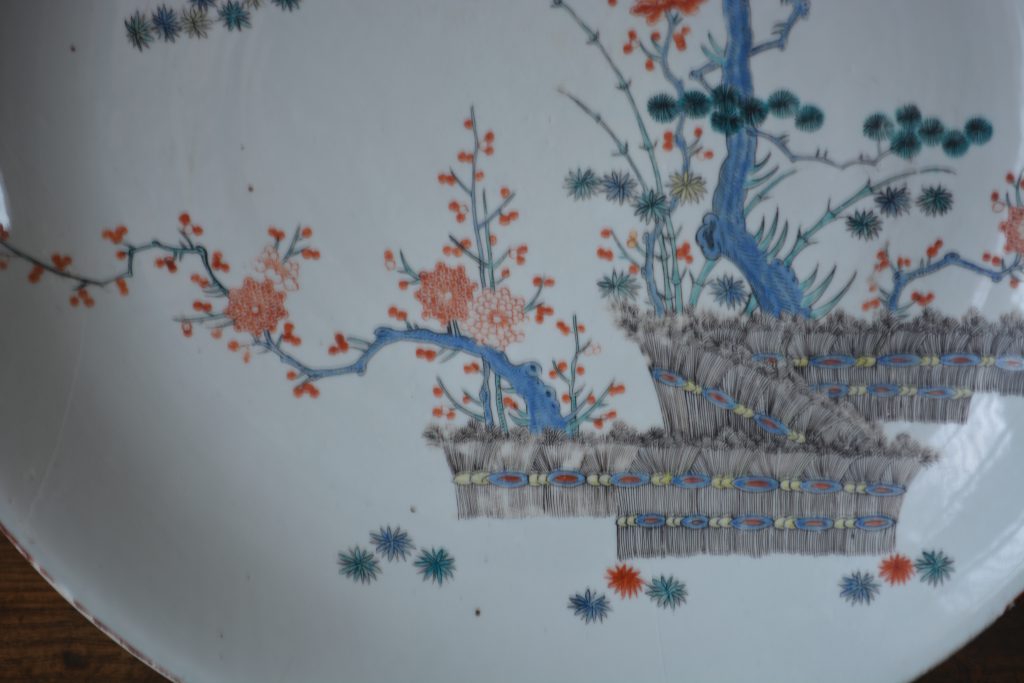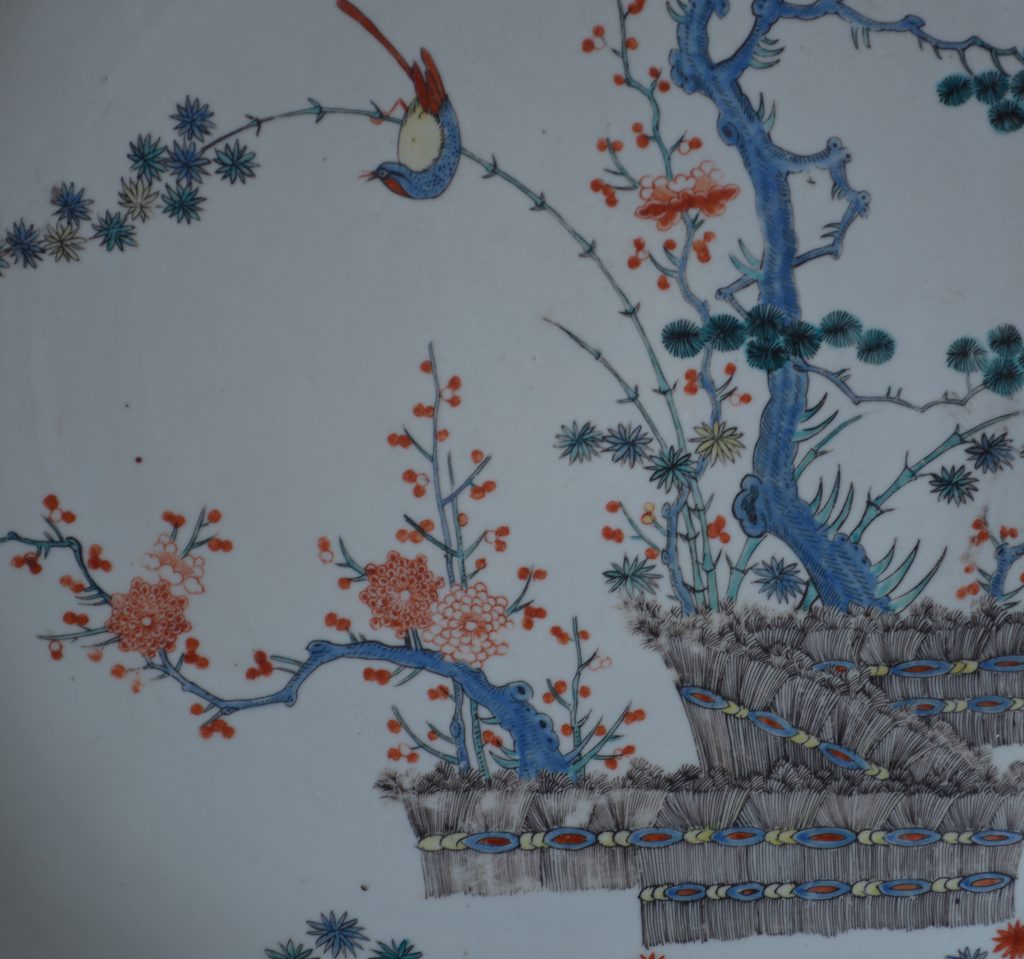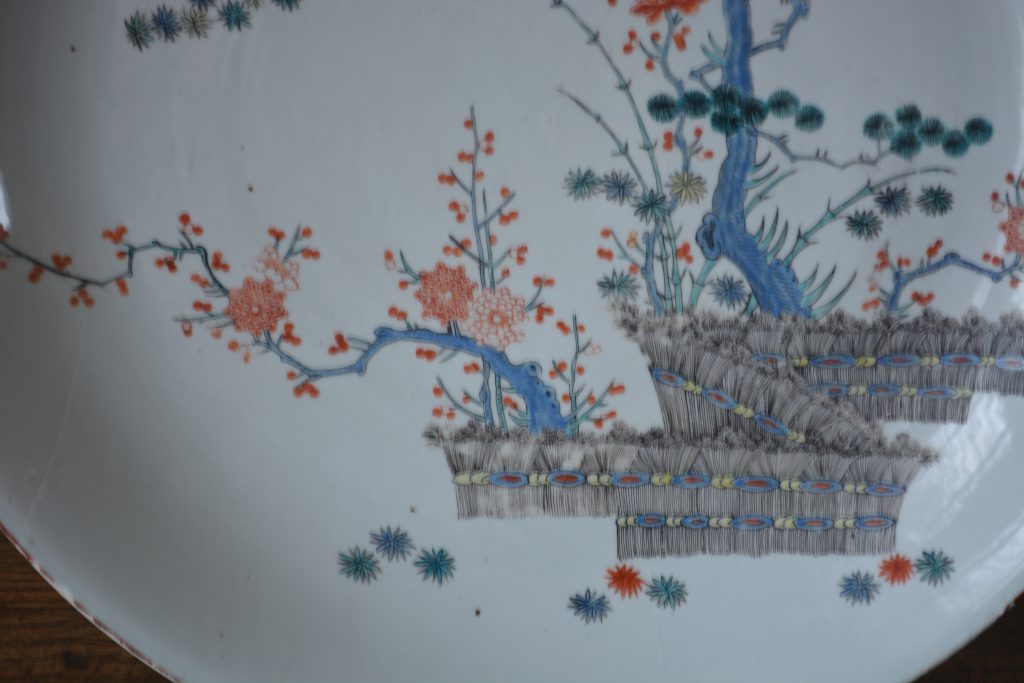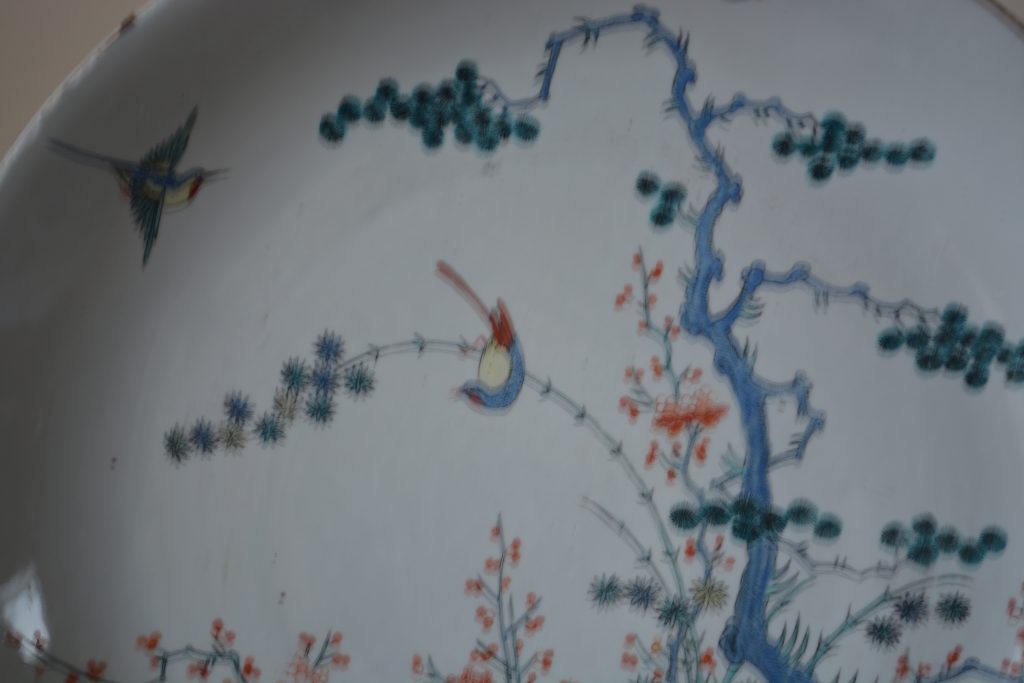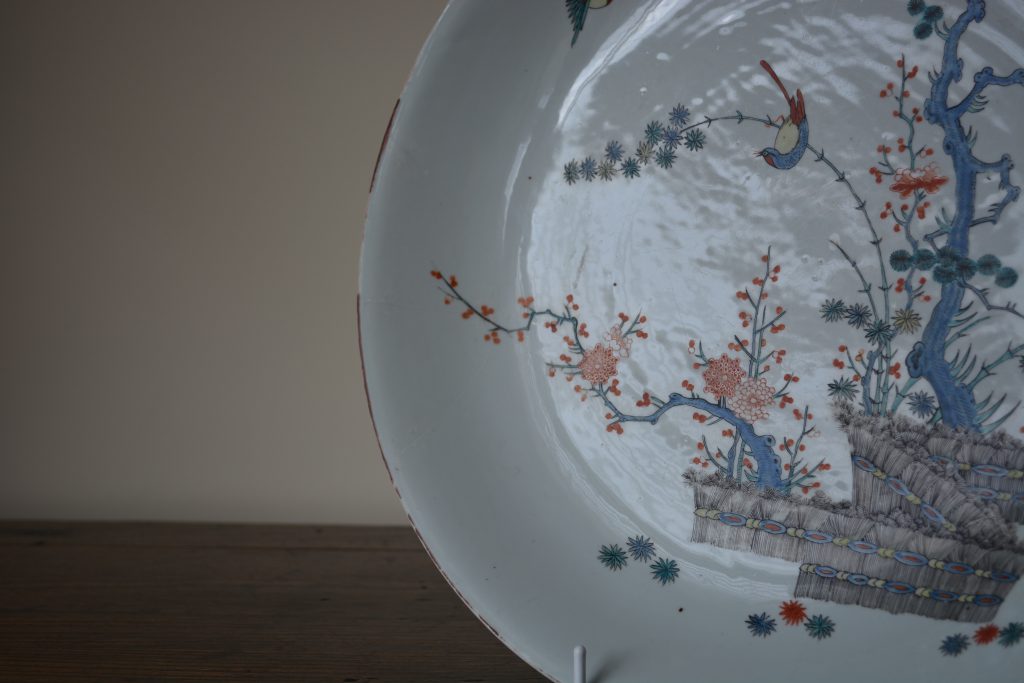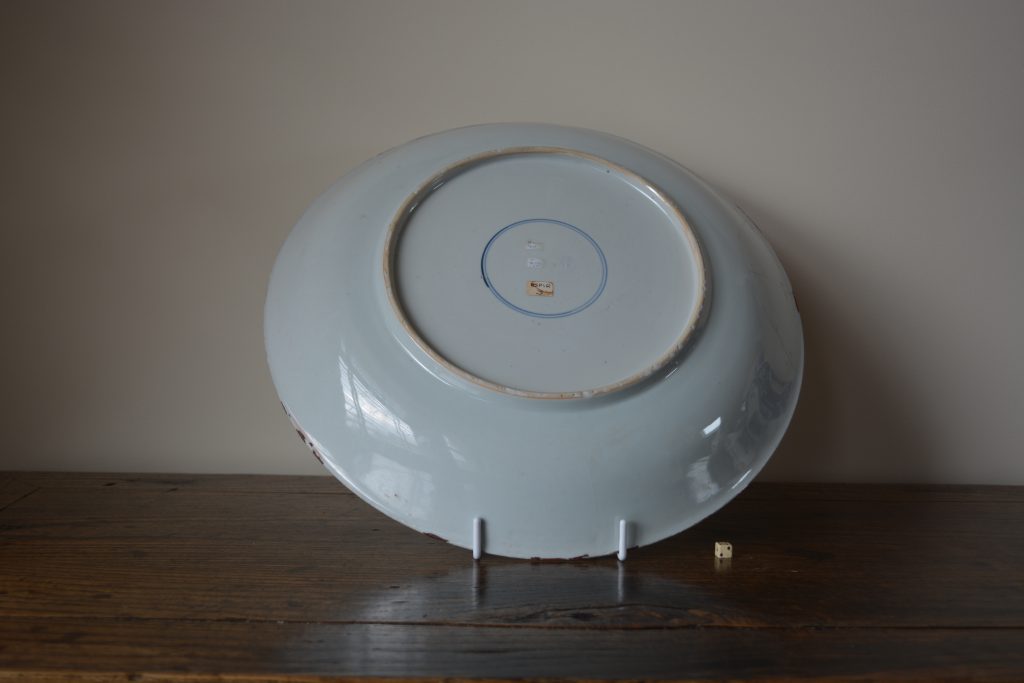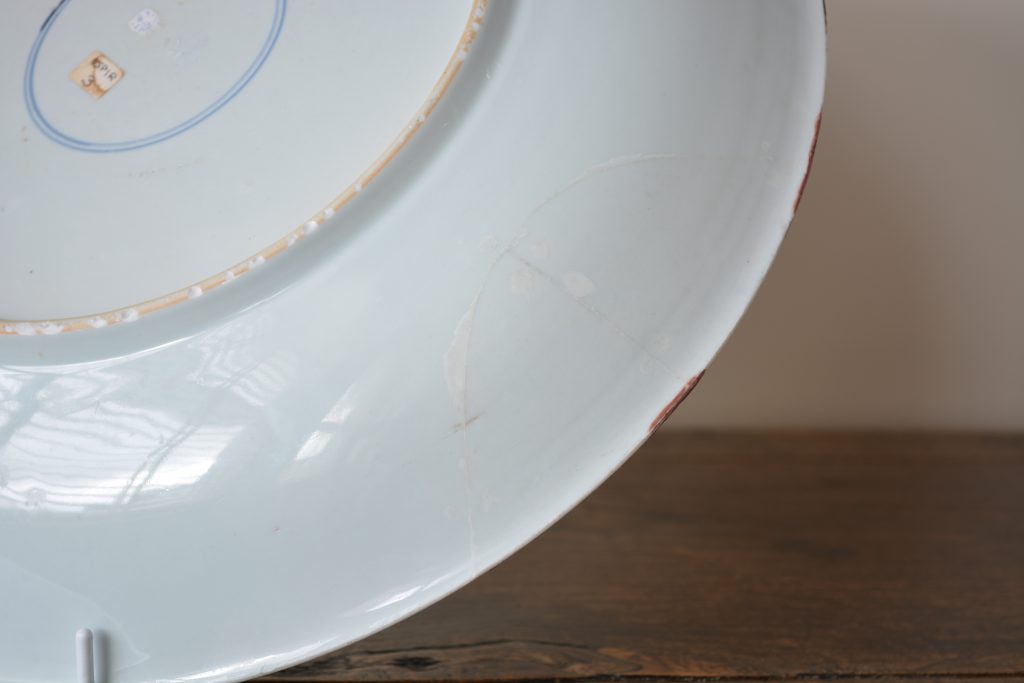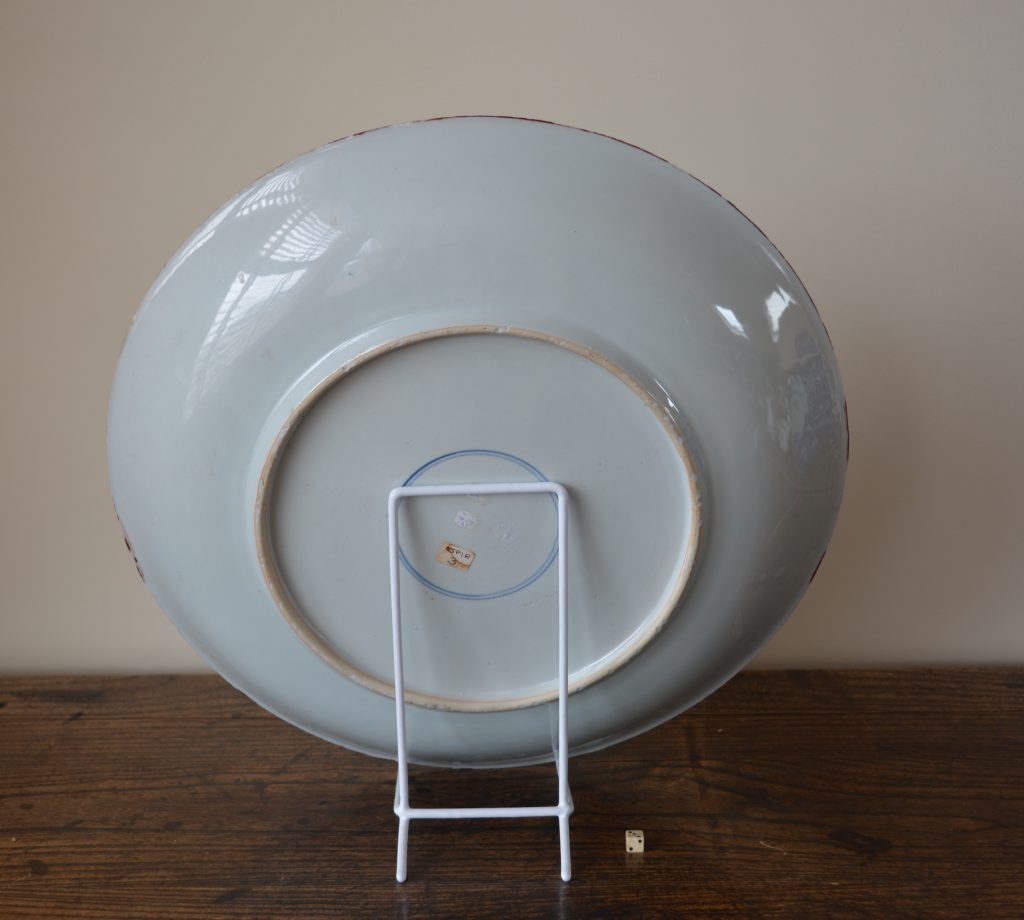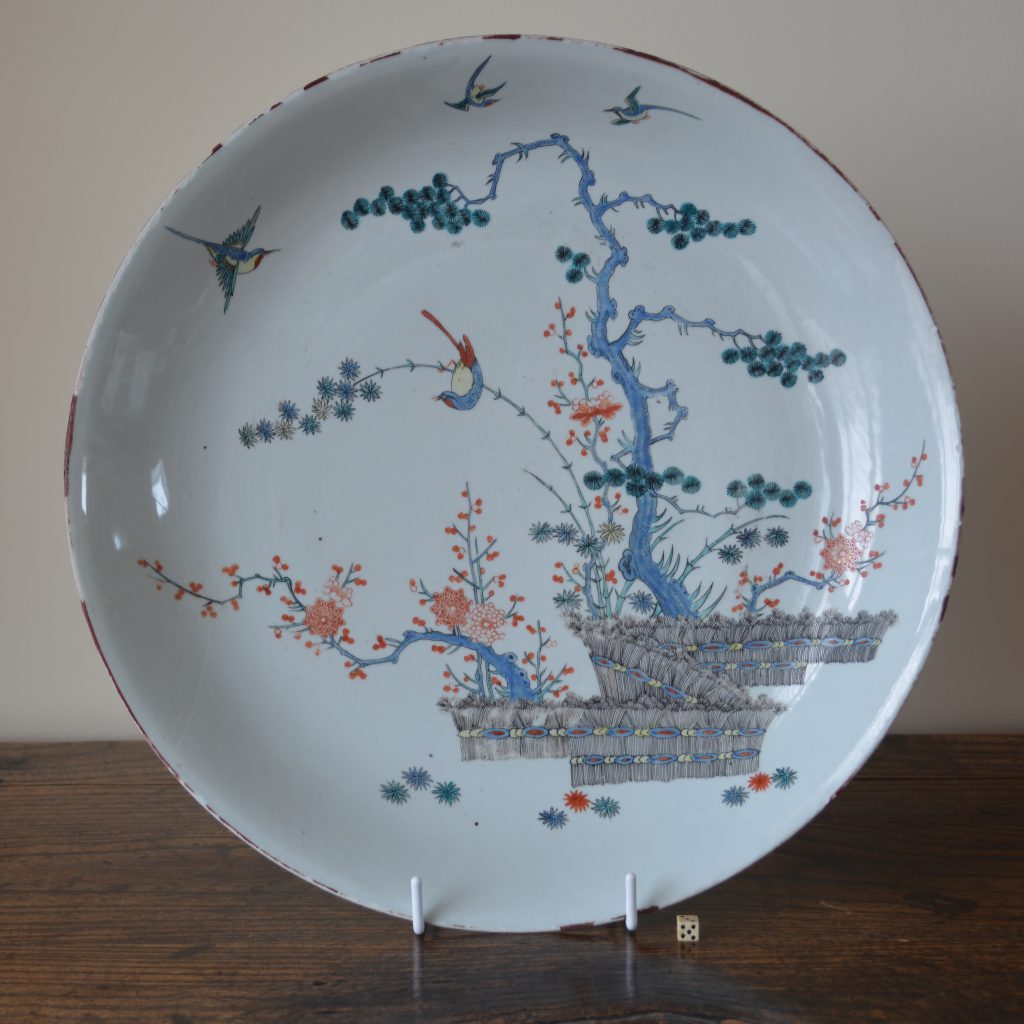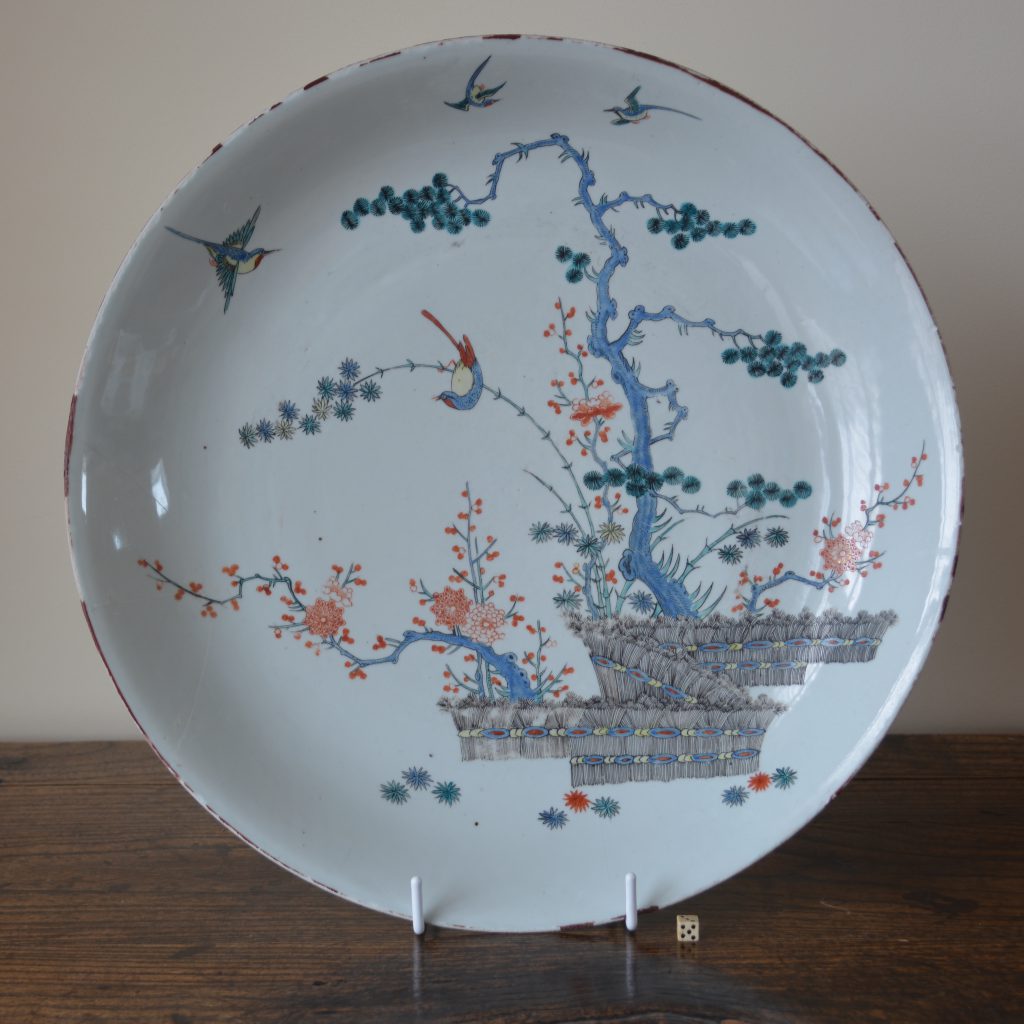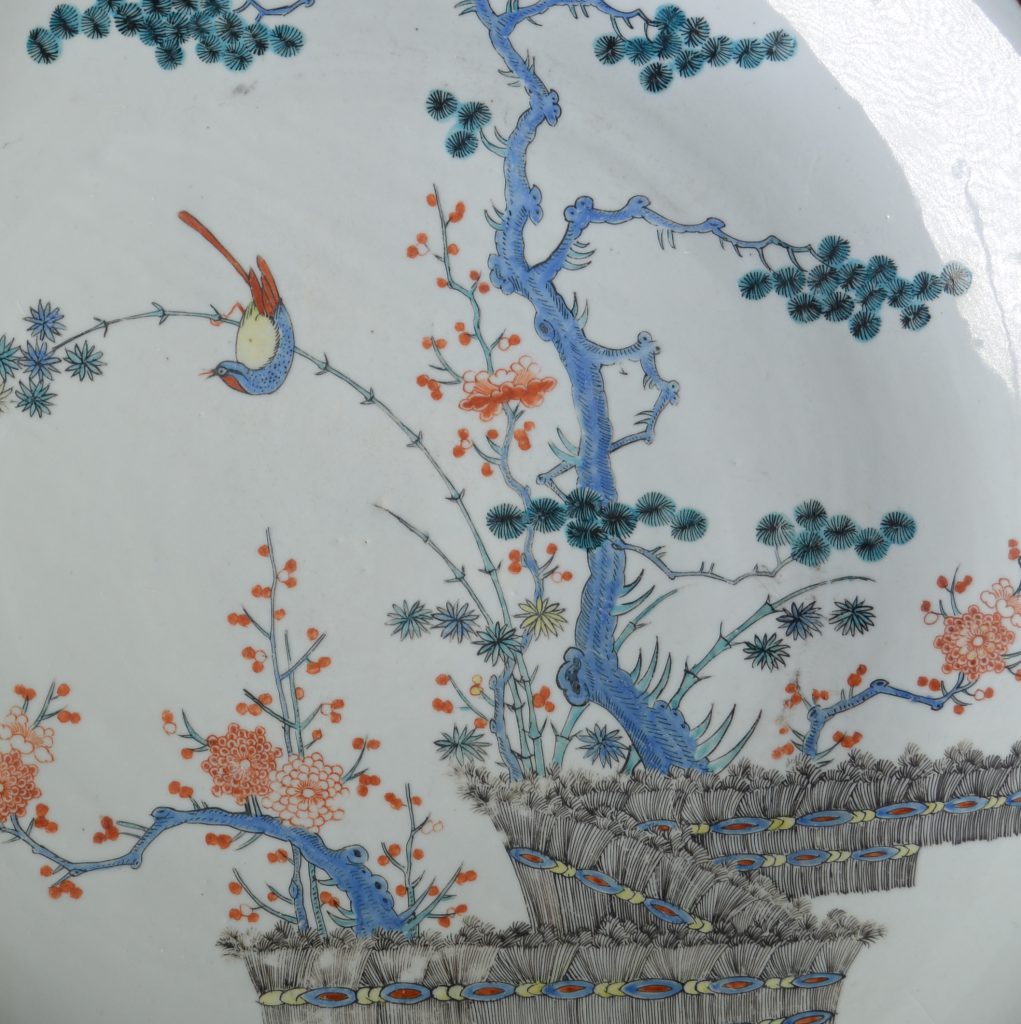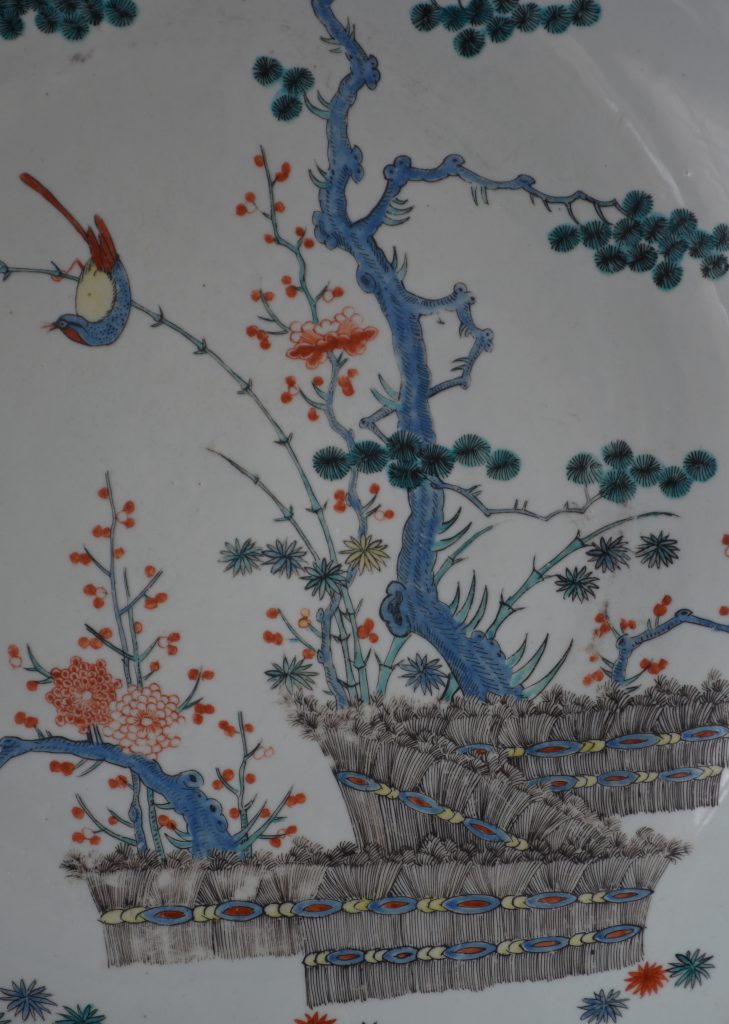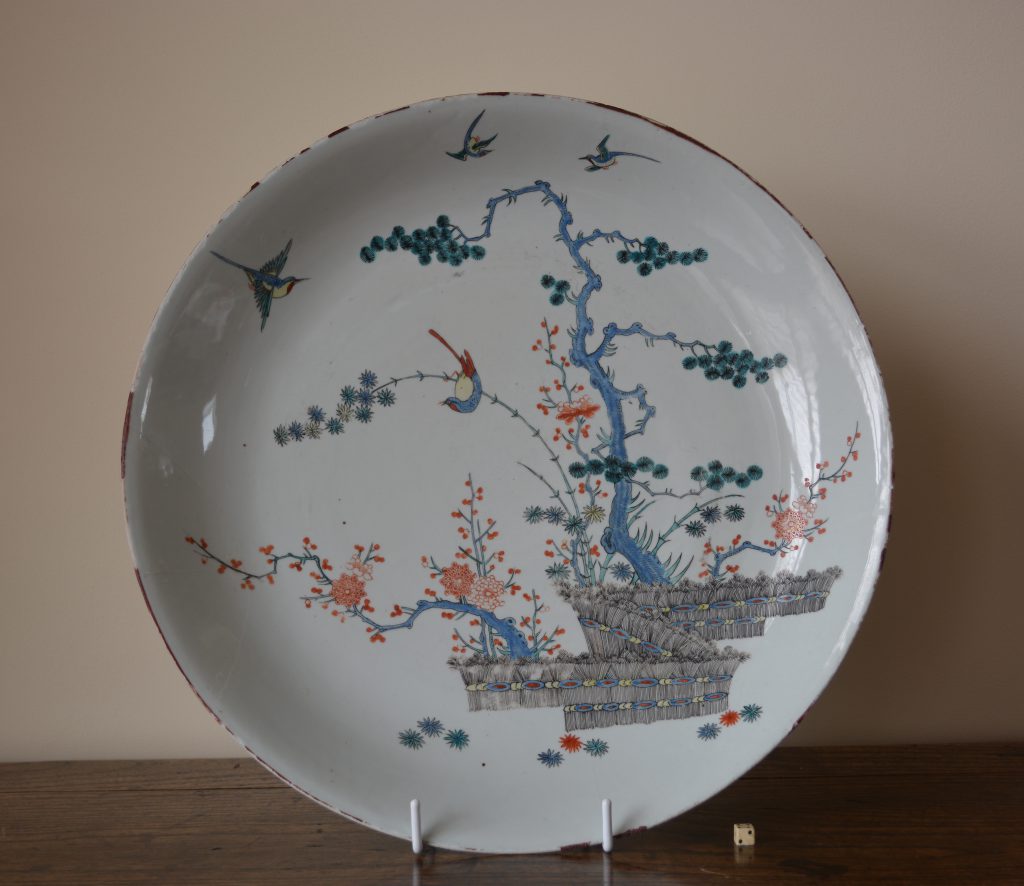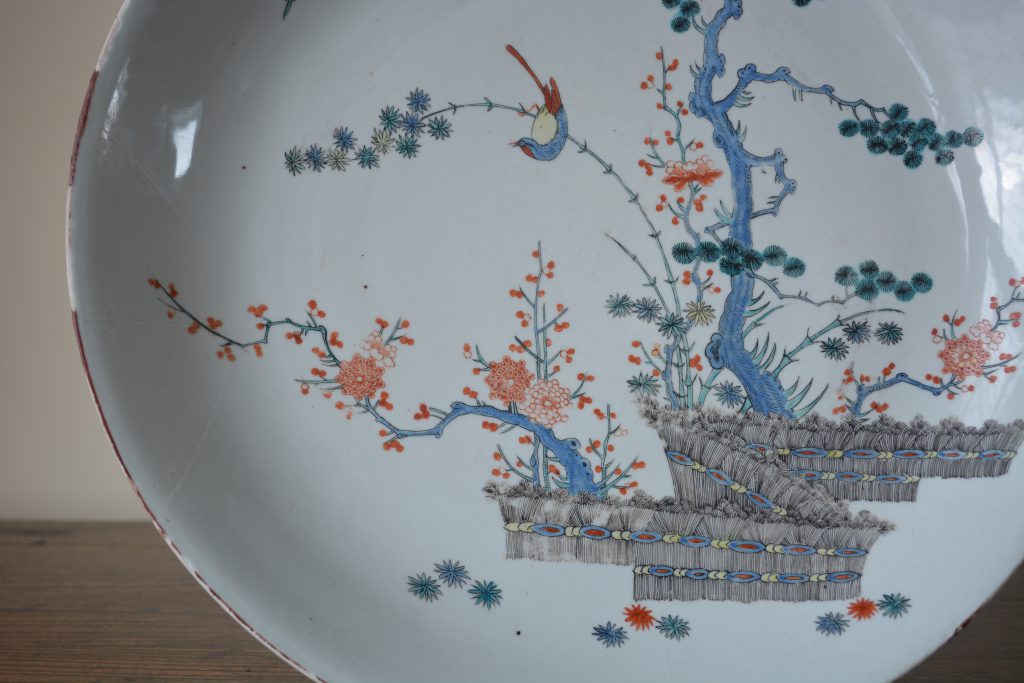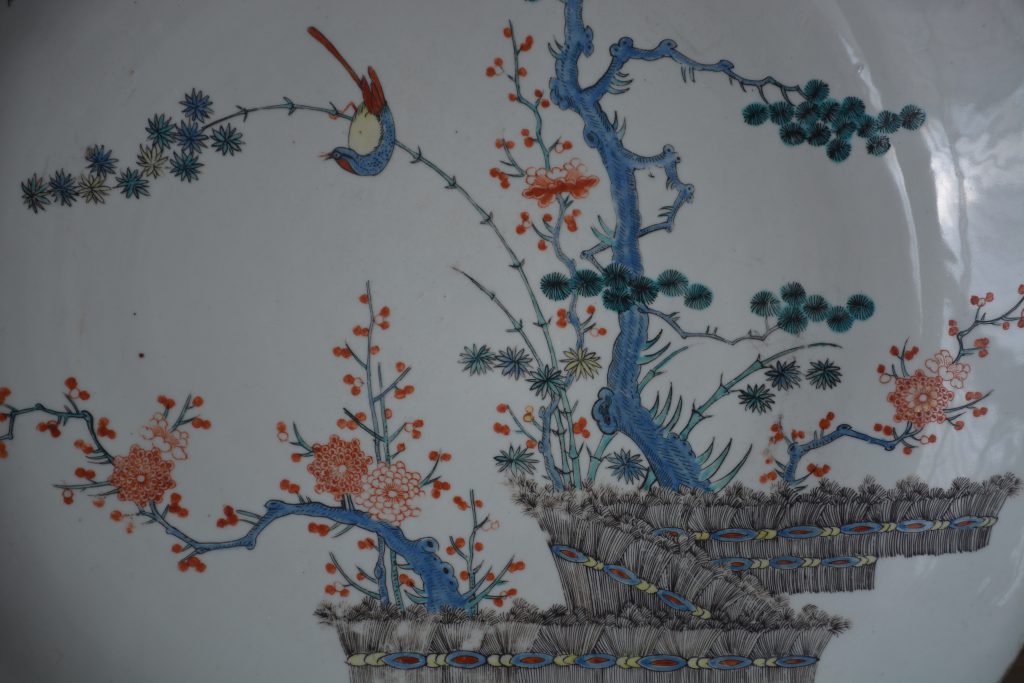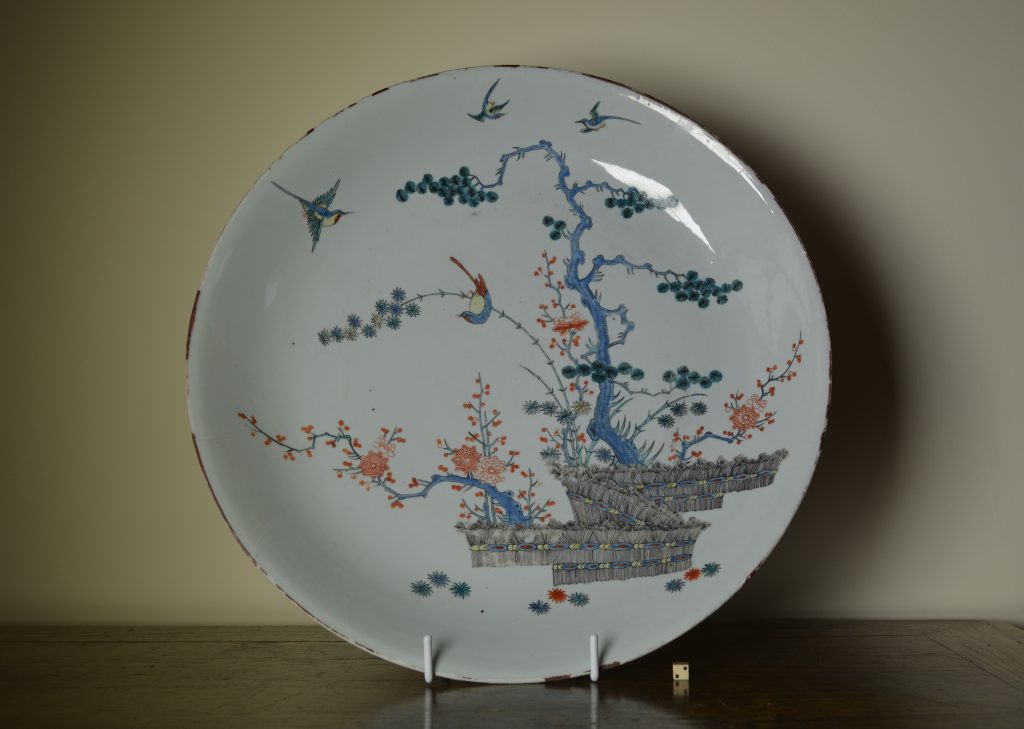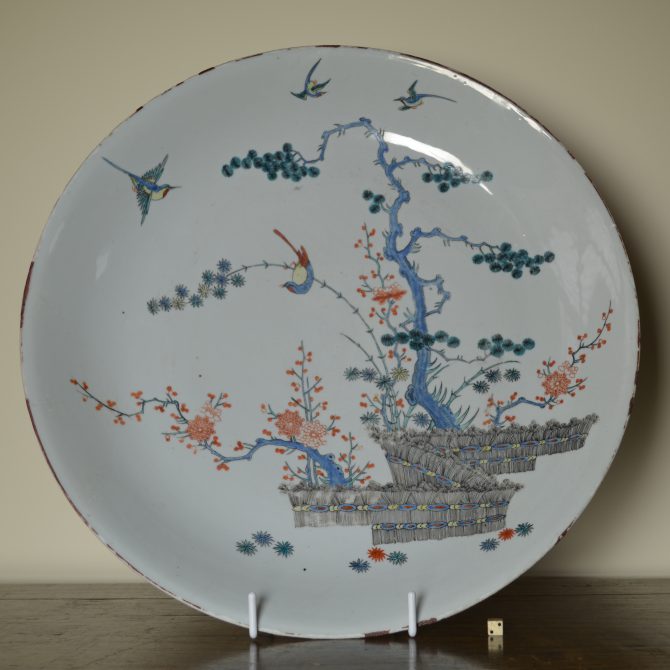
A Massive Rare Dutch Decorated Kakiemon Style Chinese Porcelain Saucer Shaped Dish c.1720 – 1725.
A rare large Chinese export porcelain saucer shaped dish, entirely decorated in Holland in the Kakiemon style with the ‘Three Friends of Winter’. The porcelain is late Kangxi or early Yongzheng and was made in around 1720, the decoration dates to c.1720-1725, it includes ‘banded-hedges’ and is quite faithful to the Japanese Kakiemon original. It is highly unusual to find such a large piece of Chinese porcelain that is entirely enamelled in Holland, plain Chinese dishes of this size are extremely rare if they exist at all, so it is highly likely this dish was ordered especially with the intention of decorating it when it arrived. Therefore the Chinese porcelain dates to c.1720-25.
SOLD
- Condition
- In poor condition, there is a large double section to the rim that has been broken out and rivited, it meassures c.150 x 60 mm. The rivits have been taken out and the section repiared. There are two long but very fine sealed cracks c.65 mm and 37 mm. Allot of the brown rim that was painted in Holland is worn and the rim is extensively fritted.
- Size
- Diameter : 39.4 cm (15 1/4 inches).
- Provenance
- Purchased from James Norbury, Portobello Road, 8th of January 2000. The Helen Espir Collection of European Decorated Chinese Export Porcelain : "a member of the Oriental Ceramic Society and collector, with her husband. Having made a typical collection of Song and provincial Ming blue and white, they decided to concentrate on what used to be called `clobbered` porcelain. She is the author of the standard work on the subject, European Decoration on Oriental Porcelain,2005, the first to examine the work of European decorators on Chinese porcelain throughout the eighteenth and nineteenth centuries, focusing on enamellers in Holland, Germany and England. She has learned Chinese." From Provenance ; Collectors, Dealers & Scholars : Chinese Ceramics in Britain & America (Roy Davids, Dominic Jellinek, Privately Printed, 2011. ISBN 978-0-9570148-0-0). "a member of the Oriental Ceramic Society and collector, with her husband. Having made a typical collection of Song and provincial Ming blue and white, they decided to concentrate on what used to be called `clobbered` porcelain. She is the author of the standard work on the subject, European Decoration on Oriental Porcelain,2005, the first to examine the work of European decorators on Chinese porcelain throughout the eighteenth and nineteenth centuries, focusing on enamellers in Holland, Germany and England. She has learned Chinese." From Provenance ; Collectors, Dealers & Scholars : Chinese Ceramics in Britain & America (Roy Davids, Dominic Jellinek, Privately Printed, 2011. ISBN 978-0-9570148-0-0).
- Stock number
- 24553
- References
- This Kakiemon style Chinese porcelain dish published, see : European Decoration on Oriental Porcelain 1700 - 1830 (Helen Espir,Jorge Welsh Books, 2005) page 82, plate 14.
Information
Kakiemon Porcelain :
Kakiemon decoration is usually of high quality, often delicate and with well-balanced asymmetric designs. The designs were normally quite sparse emphasizing the fine white porcelain body known in Japan as Nigoshide (milky white). The opaque white milky Nigoshide body was used on the finest pieces, it appears that it was reserved for fine quality enamelled decoration. Kakiemon porcelain was decorated with a great variety of imaginative designs which include elements such as the `banded hedge`, `flying squirrel`, and the `Quail and Millet` design. The `Three Friends of Winter` were also a very popular group of designs, other subject taken from nature include flowers (especially the chrysanthemum, the national flower of Japan) as well as birds and rock-work. Figural subjects such as the `Hob in the Well` were also popular. This design illustrates a Chinese folk tale where a sage saves his friend who has fallen into a large fish-bowl by throwing stones at it, braking open the pot. Banded-Hedges were a formal device within Japanese traditional gardens, they were often incorporated in designs, includes `The Three Friends of Winter` (Pine, Bamboo and Prunus). These three plants signify perseverance, as neither the pine nor the bamboo shed their leaves in winter and the plumb (Prunus) flowers at the very end of the winter, heralding the arrival of spring.
The Three Friends of Winter :
These three plants, Pine, Bamboo and Prunus, signify perseverance. Neither the Pine nor the Bamboo shed their leaves in winter and the Plum flowers at the very end of the winter, heralding the arrival of spring.
